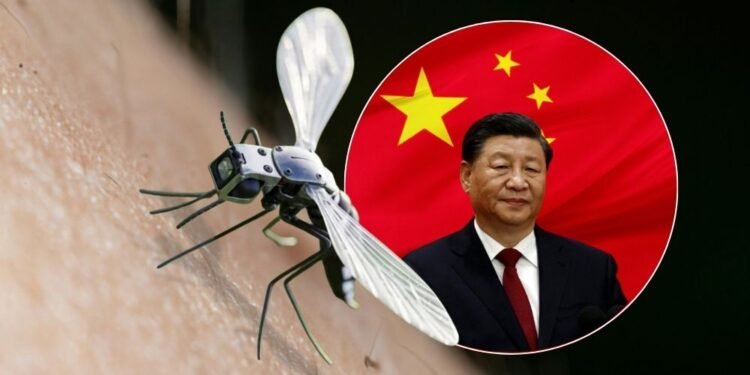In a significant leap for military micro-robotics, researchers at China’s National University of Defense Technology (NUDT) in Hunan province have developed a drone no larger than a mosquito, designed for covert reconnaissance and special operations.
Unveiled on June 14, 2025, through a broadcast on China Central Television’s military channel, CCTV-7, this miniature unmanned aerial vehicle (UAV) mimics the appearance and flight of an insect, measuring approximately 2 centimeters in length and weighing less than 0.3 grams.
Its biomimetic design, featuring two leaf-like wings and three hair-thin legs, allows it to blend seamlessly into environments, evading detection by both the naked eye and conventional radar systems.
This development positions China at the forefront of a global race to innovate stealth technologies for battlefield and intelligence-gathering applications.
The drone’s compact frame houses sophisticated miniaturized components, including ultra-small cameras, microphones, and sensors capable of capturing high-resolution images, audio, and electronic signals.
According to the NY Post report, these features make it ideal for infiltrating high-security or confined spaces, such as indoor facilities or urban settings, where larger drones are impractical.
Controlled remotely, potentially via a smartphone, the UAV’s flapping wings enable agile, insect-like maneuverability, enhancing its ability to perch or land for prolonged observation. However, its diminutive size imposes limitations, notably in battery life and payload capacity, restricting its operational range and endurance.
Despite these constraints, the drone’s stealth capabilities offer a strategic advantage for intelligence, surveillance, and reconnaissance (ISR) missions, particularly in scenarios requiring discreet data collection.
This technological breakthrough reflects China’s broader investment in next-generation military tools, aligning with its strategy of integrating advanced consumer electronics into defense applications.
The NUDT’s work extends beyond this microdrone, with concurrent development of humanoid robots and artillery-launched UAVs capable of withstanding extreme forces.
These efforts signal China’s ambition to redefine modern warfare through compact, intelligent systems. However, the technology raises ethical concerns, including the potential for misuse in espionage or privacy violations if acquired by non-state actors.
Experts note that while the drone’s battlefield impact may be limited due to its short range, its ability to access restricted areas undetected poses significant challenges for counterintelligence.
Globally, microdrone development is a competitive field. Norway’s Black Hornet 4, a palm-sized UAV used by Western militaries, offers enhanced durability and a 1.2-mile range, earning a 2025 U.S. Department of Defense award. Harvard University’s RoboBee, capable of aerial and aquatic transitions, explores non-military applications like environmental monitoring.
These parallel advancements underscore a worldwide trend toward miniaturization, with potential uses in disaster response, agriculture, and medicine. Yet, China’s mosquito drone sets a new benchmark for stealth, prompting concerns about its implications for global security.
The unveiling of this miniature UAV highlights the dual-use potential of micro-robotics, balancing military innovation with risks of misuse. As nations continue to refine these technologies, the challenge lies in developing countermeasures to detect and neutralize such discreet devices while addressing ethical questions surrounding their deployment.
China’s mosquito-sized UAV represents a pivotal step in redefining surveillance and reconnaissance, urging policymakers and defense strategists to adapt to an era where the smallest tools may wield the greatest impact.











